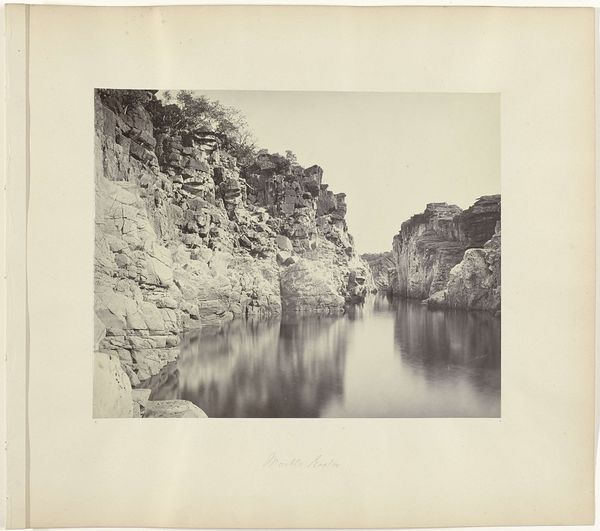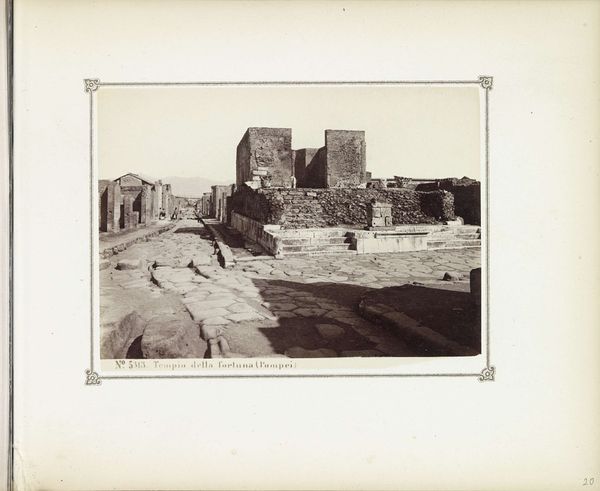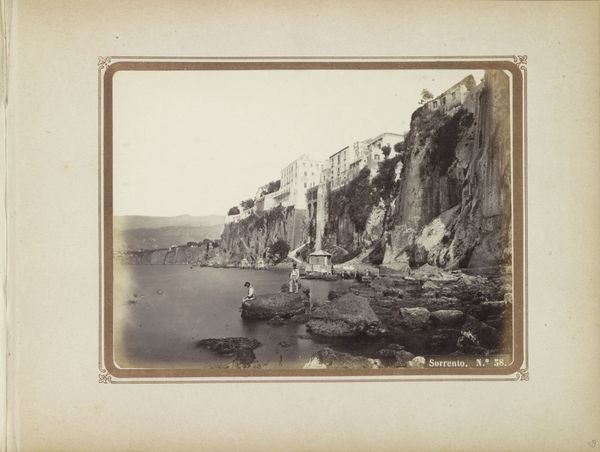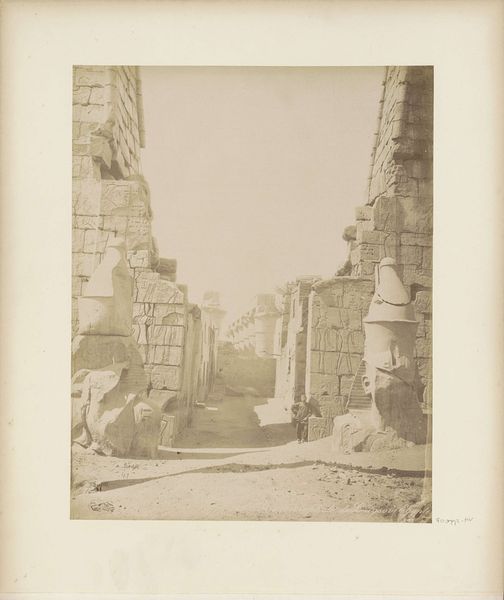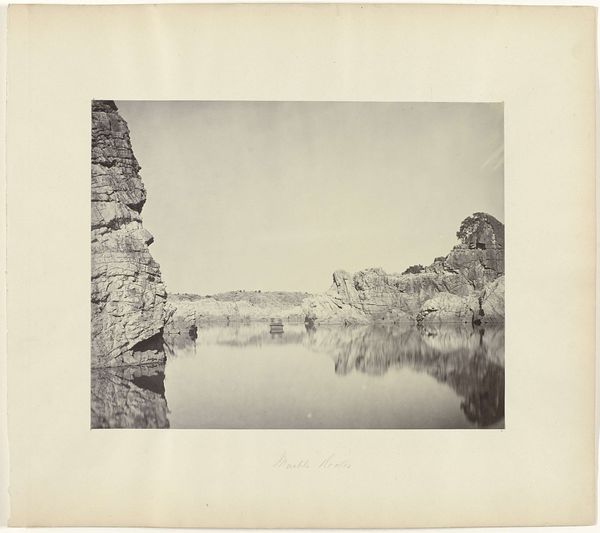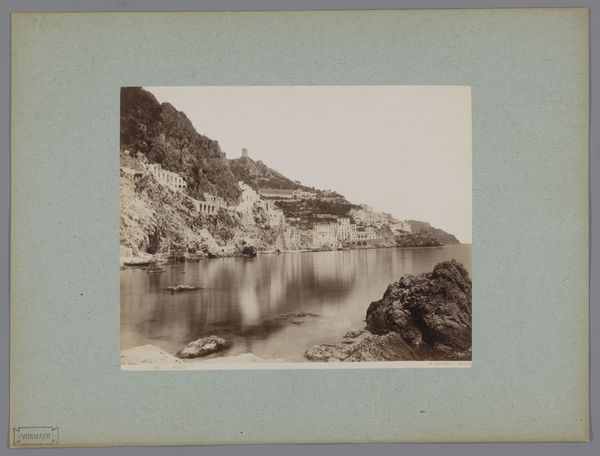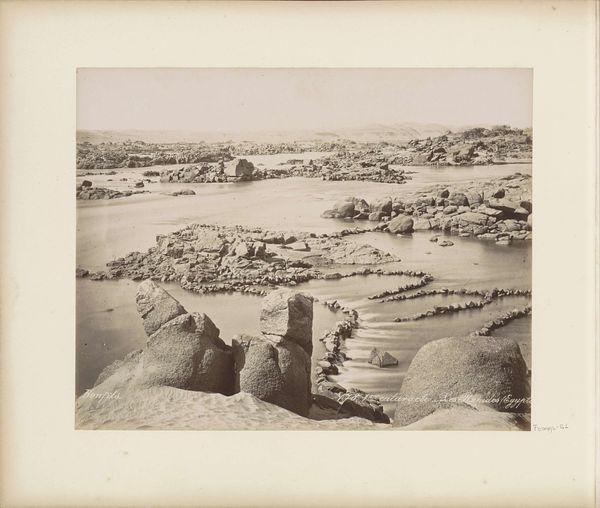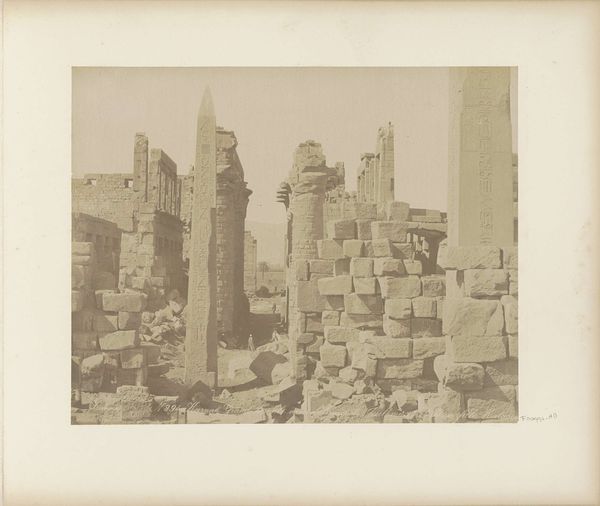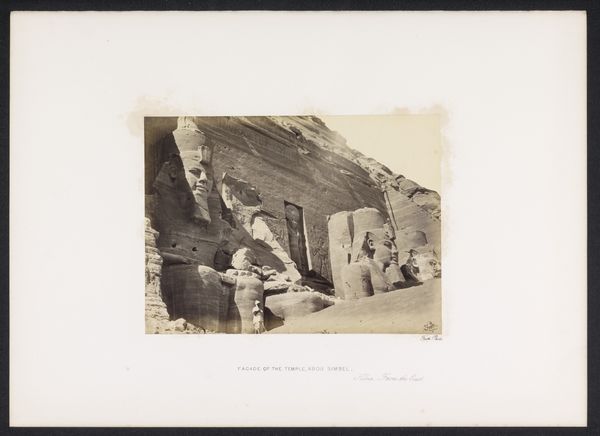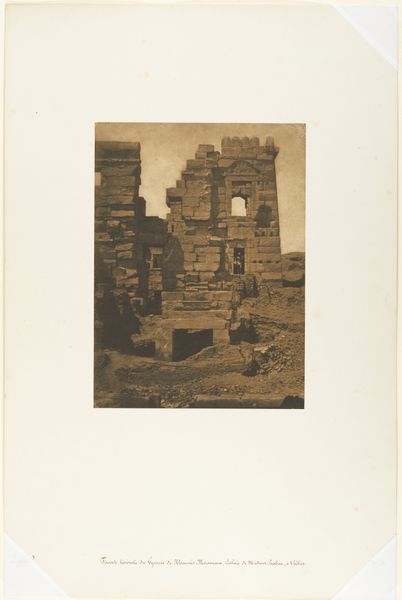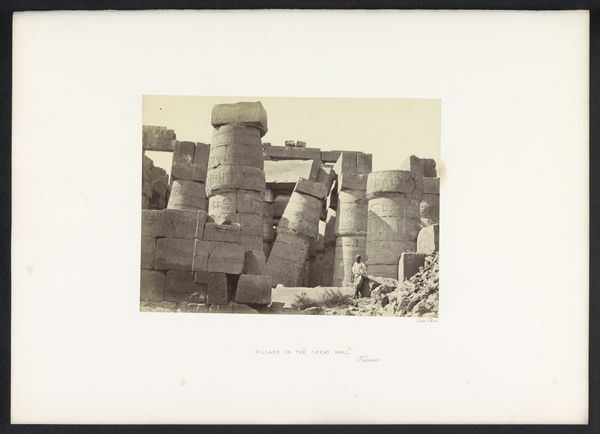
Waterpeilinstrument (Nilometer) en ingang van de waterval in Aswan c. 1870 - 1890
0:00
0:00
cgzangaki
Rijksmuseum
photography, gelatin-silver-print
#
landscape
#
ancient-egyptian-art
#
photography
#
ancient-mediterranean
#
gelatin-silver-print
#
cityscape
Dimensions: height 224 mm, width 280 mm
Copyright: Rijks Museum: Open Domain
Curator: Looking at this gelatin-silver print, probably captured between 1870 and 1890 by C. & G. Zangaki, what feelings bubble up for you? The work is titled *Waterpeilinstrument (Nilometer) en ingang van de waterval in Aswan*... Editor: There’s an arresting sense of stillness. The monochrome tones imbue it with an otherworldly quality, a moment suspended in time. I'm immediately drawn to the immensity of the architecture in contrast to the boat--the texture is quite incredible! Curator: The photograph meticulously documents an ancient Nilometer, a structure used for measuring the Nile's water level, crucial for predicting floods and ensuring successful harvests. Can you imagine life depending so explicitly on the water’s natural cycles? Editor: Absolutely. Water has historically been a source of social stratification and political control, hasn't it? Seeing this monument— this measuring tool—immediately makes me consider ancient power dynamics, the ability to control and predict resources and impact agricultural outputs. Who had access to the information, and what did that access enable? Curator: Precisely. And that sense of scale! It seems to emphasize human insignificance next to both nature and, simultaneously, the constructed, lasting empire. This image speaks volumes about our enduring quest to quantify the unknown. Also, that dappled light on the stone, almost imperceptible… don’t you find that delicious? Editor: A very delicious detail indeed! This photograph makes one appreciate how much information could be conveyed even without the color spectrum that contemporary audiences take for granted. However, there’s something inherently colonial about landscape photography in that era; images such as these further romanticized the "Orient" and other places far away to entice outsiders, a gaze still quite alive in touristy landscapes to this day. Curator: That’s a potent point. The romanticism intertwines with, even perhaps obscures, that colonial project. The interplay between the objective depiction of a landscape, and its implicit narrative is always fascinating. It gives me a sense of the vastness of history, all condensed within a single image. What a remarkable capture. Editor: I concur. It is an interesting point that you make—the intersection of technology and human life.
Comments
No comments
Be the first to comment and join the conversation on the ultimate creative platform.
